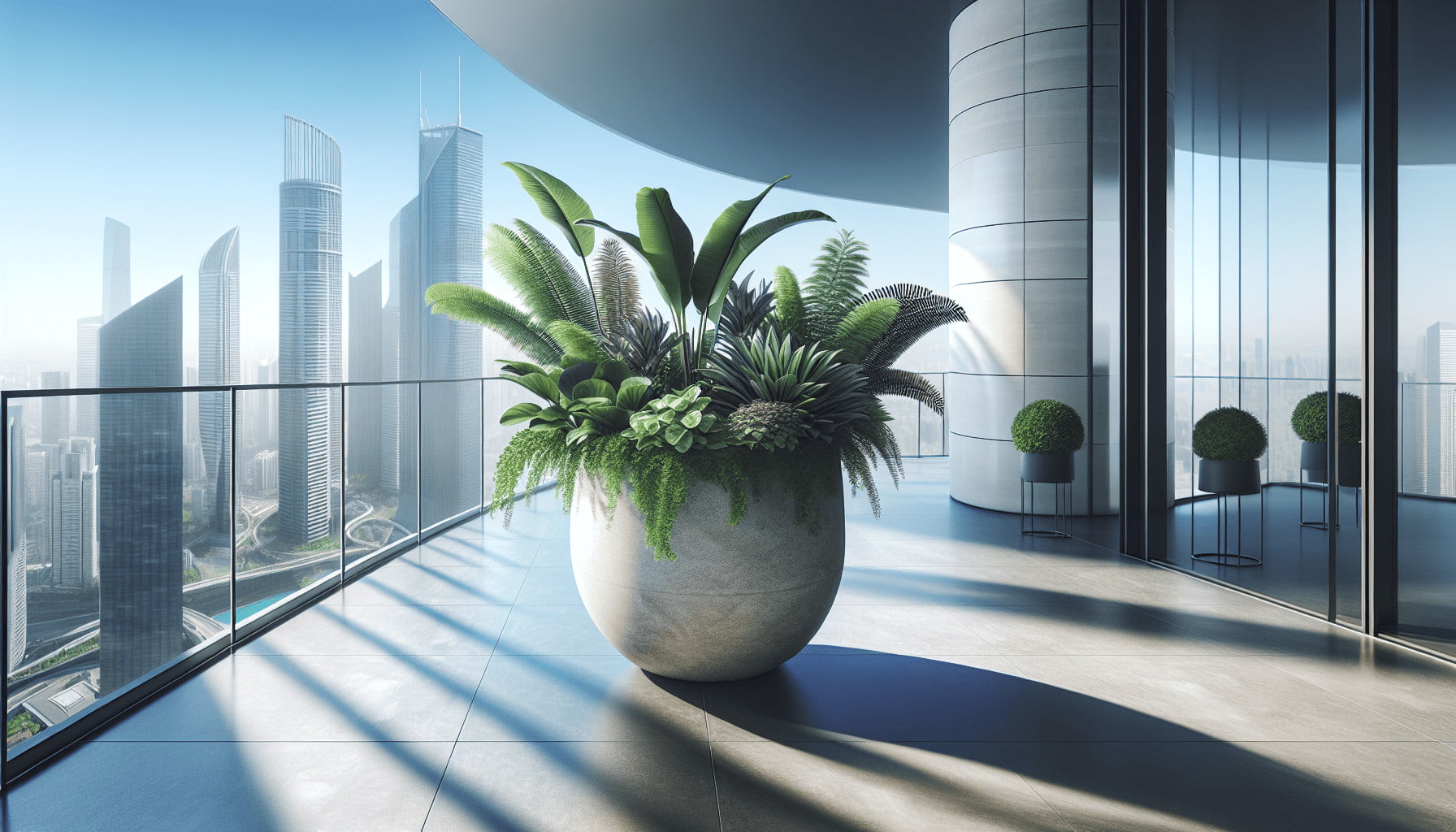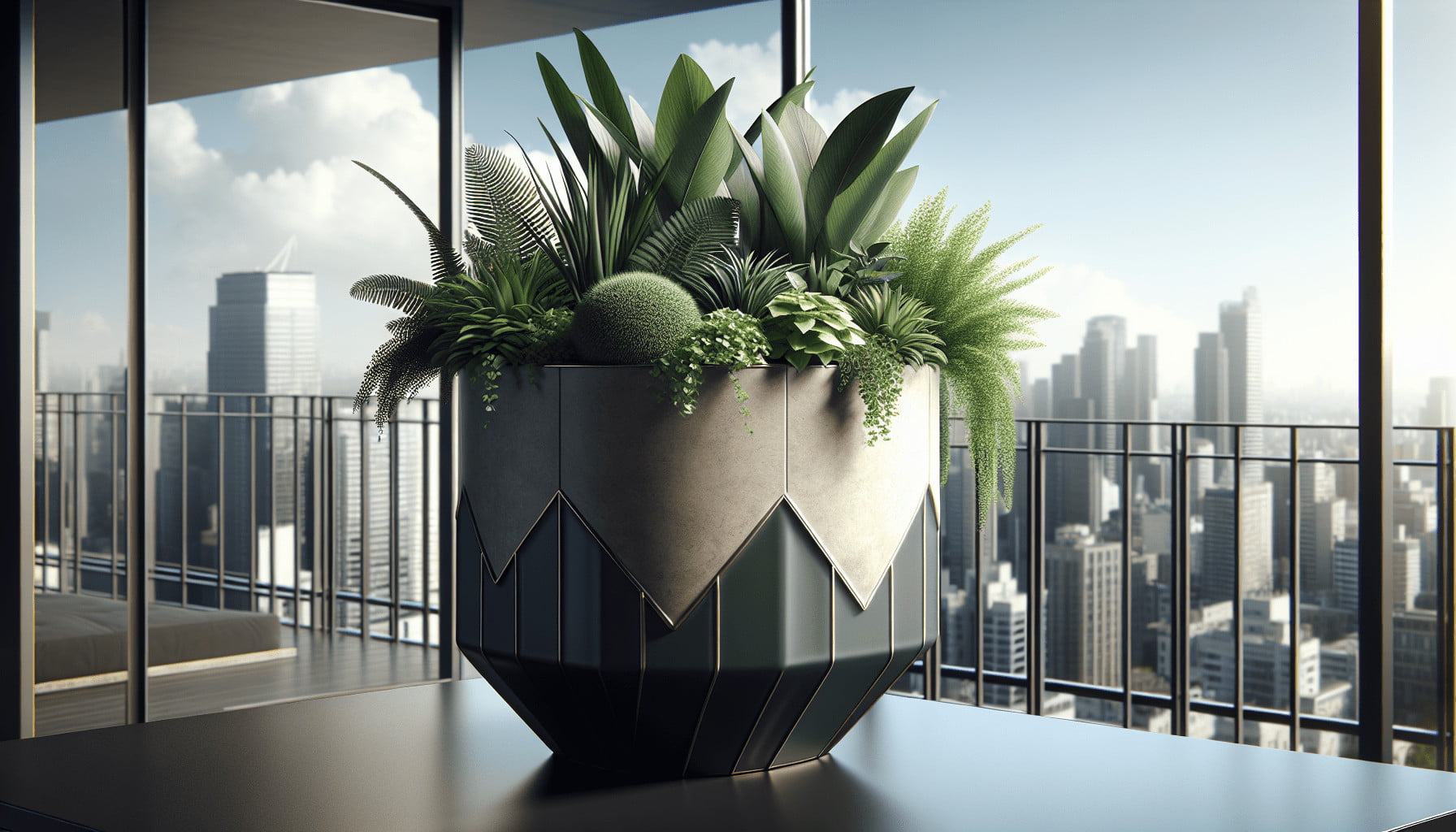Are you ready to transform your urban space into a lush garden oasis? Urban gardening can indeed be a rewarding pursuit, whether you’re looking to grow your own fresh herbs, vibrant flowers, or even vegetables. However, one of the key factors in ensuring your urban garden thrives is selecting the right pots and planters. This guide aims to provide you with all the information you need to make the best choices for your urban gardening project.
Understanding Your Urban Gardening Objectives
Before you start populating your balcony or patio with new green life, it helps to understand your goals. Are you interested in growing ornamental plants, or do you see yourself harvesting fresh vegetables and herbs? Understanding your objectives will inform the type of pots and planters you should select.
Consider Your Plant Choices
Different plants have different needs, and this will significantly impact your choice of containers. For instance:
| Plant Type | Container Needs |
|---|---|
| Herbs | Small to medium pots, well-draining soil |
| Vegetables | Deep pots, spacious for root growth |
| Ornamental Plants | Aesthetic pots, various sizes depending on plant |
| Succulents/Cacti | Shallow pots, sandy soil |
Space Constraints
Urban spaces are often limited. Measure your available space and think about where exactly you want to place your pots and planters.
Sunlight and Weather Conditions
Certain plants require more sunlight than others. If your urban space has limited exposure to direct sunlight, you’ll need to consider this when choosing both plants and planters.
Types of Pots and Planters
Choosing the right type of pot or planter is crucial for both plant health and aesthetics. Here’s a closer look at the different materials and types of containers available.
Terracotta Pots
Terracotta pots are a classic choice for their breathability and natural aesthetic.
Pros:
- Breathable, aiding soil aeration
- Naturally rustic look
- Good for most plant types
Cons:
- Can dry out quickly
- Heavy and fragile
Plastic Pots
Plastic pots are lightweight and versatile, offering a wide range of colors and styles.
Pros:
- Lightweight, easy to move
- Retain moisture well
- Variety of styles and sizes
Cons:
- Not as breathable as clay pots
- Can look less aesthetically pleasing
Ceramic Pots
Ceramic pots, often glazed, can add a decorative touch to your urban garden.
Pros:
- Aesthetic appeal with various designs
- Good insulation for roots
Cons:
- Heavy and fragile
- Can be expensive
Metal Planters
Metal planters are modern and sleek, perfect for an urban aesthetic.
Pros:
- Durable and long-lasting
- Modern appearance
Cons:
- Can heat up quickly, affecting root health
- Potential for rust without proper treatment
Wooden Planters
Wooden planters provide a natural look and can be customized in size.
Pros:
- Natural aesthetic
- Can be custom-sized
- Good insulation for roots
Cons:
- Can rot if not treated
- Requires regular maintenance
Choosing the Right Size
When selecting pots and planters, size is a crucial factor. Choosing too small a container can restrict root growth, while a container that’s too large can hold excess water, leading to root rot.
Small Pots
Small pots are usually suitable for herbs, succulents, and small annuals.
Pros:
- Easy to move
- Perfect for small spaces
Cons:
- Limited root space
- Dry out quickly
Medium Pots
Medium pots work well for medium-sized flowering plants and vegetables like bell peppers or tomatoes.
Pros:
- Versatile for a range of plants
- Easier to manage than larger pots
Cons:
- Can still be heavy to move
- Requires regular watering and care
Large Planters
Large planters are ideal for deep-rooted plants or creating a multi-plant display.
Pros:
- Provides ample root space
- Good for mixed plants
Cons:
- Very heavy, difficult to move
- More expensive

Drainage Considerations
No matter what type of pot you choose, proper drainage is essential to prevent overwatering and root rot.
Drainage Holes
Pots should generally have drainage holes to allow excess water to escape. If you find a pot that you love without drainage holes, consider drilling your own or using it as a decorative outer pot with a smaller, draining pot inside.
Saucers
Saucers can help catch excess water but need to be emptied regularly to avoid waterlogging.
Self-Watering Planters
Self-watering planters are a great option for beginners or those who may forget regular watering.
Pros:
- Reduces the frequency of watering
- Beneficial for moisture-loving plants
Cons:
- Can be expensive
- May not be suitable for all plant types
Mobility and Accessibility
For urban gardeners, mobility and accessibility can be a big deal. Let’s examine some features that make mobility easier.
Lightweight Containers
If you’re gardening in a space where you frequently need to move your pots—perhaps to catch sunlight—then lightweight containers like plastic or fabric pots can be a good choice.
Wheels and Plant Caddies
Many large planters come with built-in wheels or you can use plant caddies to help move heavier pots around your urban garden easily.
Aesthetics and Design
When you’re gardening in an urban environment, aesthetics often play a bigger role. Your pots and planters become part of your decor. Choose containers that complement your design style, whether you prefer a modern, rustic, or eclectic look.
Coordinating with Your Space
Consider the color scheme and materials already in your space. A cohesive look will make your garden more enjoyable.
Vertical Gardening Solutions
When space is at a premium, vertical gardening solutions, like wall-mounted pots or tiered plant stands, can be excellent options. These solutions not only save space but can also create visually appealing arrangements.

Cost Considerations
Your budget will likely influence your choice of pots and planters. Here’s how you can make the most of your budget:
Budget-Friendly Options
Look for budget-friendly options like plastic pots or repurposing household items. Thrift shops and garage sales can often yield hidden gems suitable for urban gardening.
Investing in Quality
Sometimes it pays to invest in quality, especially if you’re planning to have a long-term garden. Higher-quality pots can be more durable and better for plant health.
Seasonal Considerations
Depending on your climate, seasonal changes can impact the materials and types of containers you should use.
Winter-Proof Pots
If you live in a colder climate, consider winter-proof pots that won’t crack due to freezing temperatures. Metal, plastic, and fiberglass are often good choices.
Summer-Ready Containers
For hot climates, you’ll want pots that can withstand the heat and protect your plants. Clay pots are generally good for this as they help cool the roots.
Specialty Planters
If you have specific gardening projects in mind, you might benefit from specialty planters tailored to your needs.
Herb Planters
Herb planters are often designed to be compact and easy to access. Some even come with built-in compartments for different herbs.
Vegetable Planters
These planters are usually deep and spacious to accommodate the root systems of vegetables.
Self-Watering Planters
Ideal for busy urban gardeners, self-watering planters ensure your plants get the necessary moisture without daily watering.
Sustainable Gardening Options
If sustainability is important to you, there are eco-friendly pots and planters to consider.
Recycled Materials
Containers made from recycled plastics or natural materials like coir or bamboo are sustainable choices.
DIY Planters
Upcycling old containers, such as tin cans or wooden crates, not only helps the environment but also offers a personalized touch to your garden.
Care and Maintenance
Maintaining your pots and planters can ensure they last longer and keep your plants healthy.
Cleaning and Sterilizing
Regularly clean and sterilize your pots, especially when reusing them for new plants. This helps prevent disease and pest infestations.
Repairing and Sealing
Wooden planters might need resealing over time to prevent rotting. Similarly, check for cracks in ceramic pots and seal them as needed.
Troubleshooting Common Issues
Sometimes, issues arise despite your best efforts. Here are common issues and their solutions.
Root Rot
Often caused by poor drainage. Ensure your pots have proper drainage holes and avoid overwatering.
Pests
Certain materials can attract pests. Keep an eye on your plants and use natural pest repellents as needed.
Watering Problems
Self-watering pots can alleviate most of these issues, but understanding each plant’s watering needs is crucial.
Conclusion
Urban gardening is a fulfilling endeavor that can transform even the smallest space into a green sanctuary. Selecting the right pots and planters is a critical step in this journey. From understanding your plant choices and space constraints to considering materials, sizes, and special features, there are numerous factors to weigh. Armed with this knowledge, you’re well on your way to creating a thriving urban garden that brings joy and greenery into your life.
By taking the time to choose the right pots and planters, you set the stage for your urban garden to flourish, turning your limited urban space into a vibrant and productive oasis.
